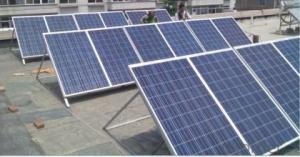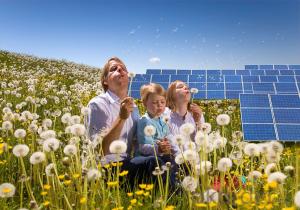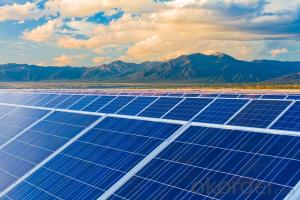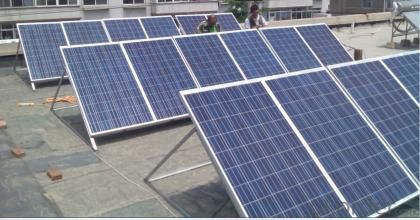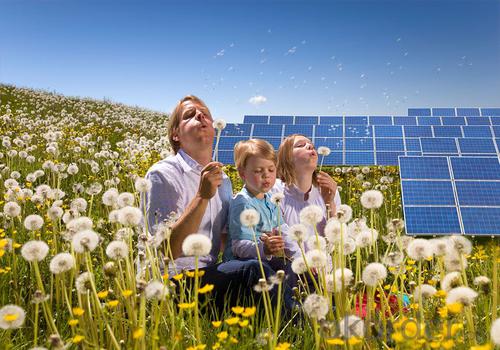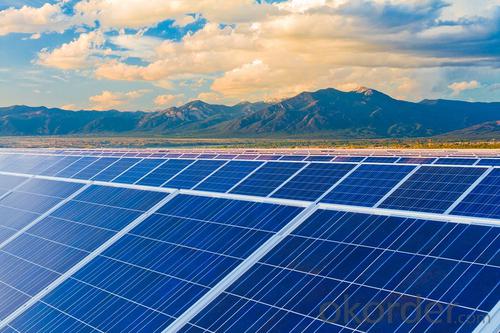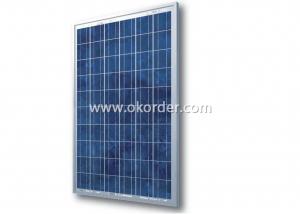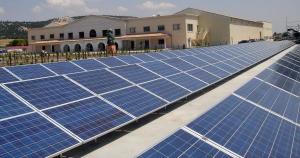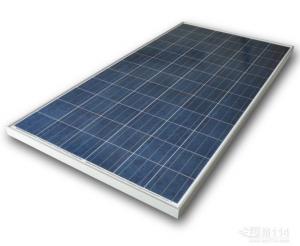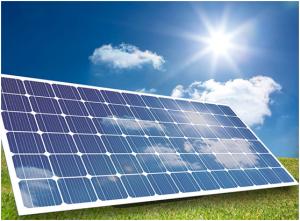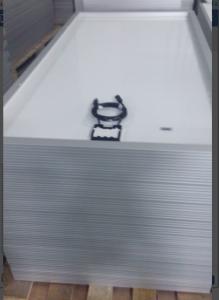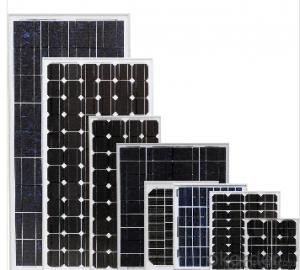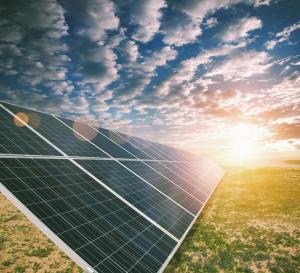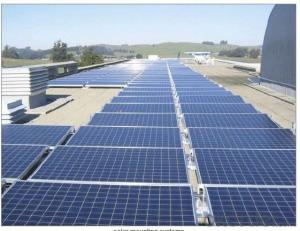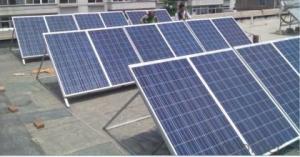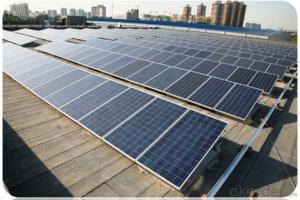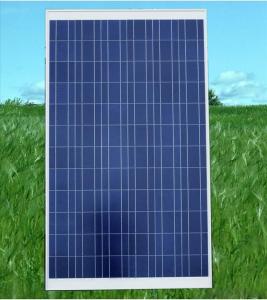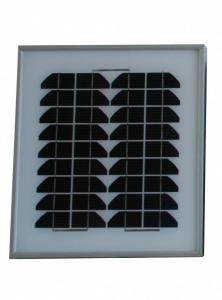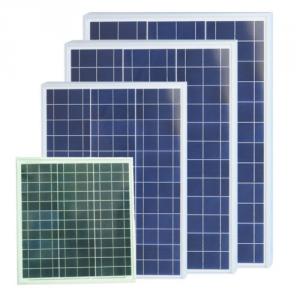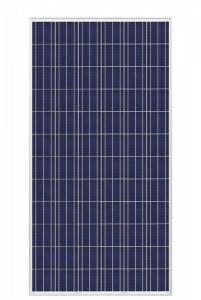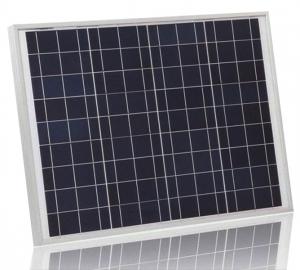Cheap Chinese Solar Panels (45-50w) CNBM Solar Polycrystalline 6 Series
- Loading Port:
- China main port
- Payment Terms:
- TT OR LC
- Min Order Qty:
- 100000 watt
- Supply Capability:
- 10000000 watt/month
OKorder Service Pledge
OKorder Financial Service
You Might Also Like
Solar cell module production process
Line called packaging line components, packaging is the production of solar cells a key step in the packaging process without a good, multi-well battery is also not a good component of production boards. Battery package not only the battery life is guaranteed, but also to enhance the combat strength of the battery. Product quality and high service life is to win can be the key to customer satisfaction, so the quality of components of the package board is very important. Mono-crystalline solar module is the core part of solar power systems, as well as the most important part of the solar system. Mono-crystalline solar module consists of high efficiency crystalline silicon solar cell, super white cloth grain toughened glass, EVA, transparent TPT backboard and the composition of aluminum alloy frame. The function of Mono-crystalline solar module is to convert solar energy into electric energy, or sent to the storage battery, or promote work load. The quality of the solar energy battery components and cost will directly decide the quality and cost of the whole system.
Process is as follows:
1, the battery test
2, positive Welding - Inspection –
3, on the back of cascading - Inspection –
4, laying (glass cleaning, material cutting, glass pre-processing, laying) –
5, laminating –
6, to flash ( to the side, cleaning) –
7, fitted border (glue, loading angle keys, punching, install box, scrub I glue) –
8, the welding junction box –
9, high-pressure test –
10, component testing -- -
11 appearance inspection, packaging and storage;
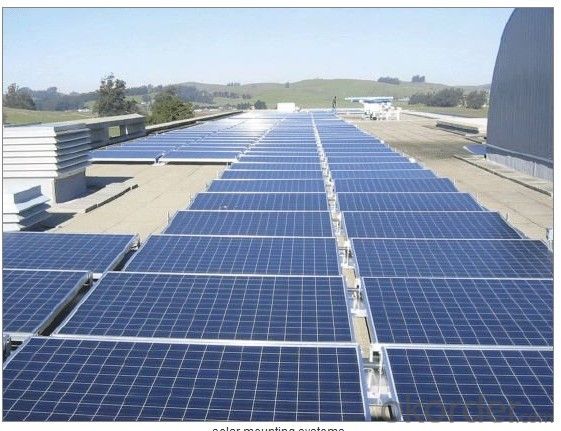
Data sheet
| Characteristics | |
| Max Power Voltage Vmp (V) | 17.4V-17.6V |
| Max Power Current Imp (A) | 2.59A-2.85A |
| Open Circuit Voltage Voc (V) | 22.4V-22.5V |
| Short Circuit Current Isc (A) | 2.77A-3.04A |
| Max Power Pm (W) | 40W-50W |
| Temperature Coefficient of Cells | |
| NOCT | 47℃±2℃ |
| Temperature Coefficients of Isc (%/℃) | 0.06% |
| Temperature Coefficients of Voc (%/℃) | -0.33% |
| Temperature Coefficients of Pmp (%/℃) | -0.45% |
| Mechanical Data | |
| Type of Cells (mm) | Poly156×52 |
| Dimension | 700×510×30mm |
| Weight | 4.5kg |
| NO.of Cells and Connections | 3×12=36 |
| Limits | |
| Operating Temperature | –45°C to +80°C |
| Storage Temperature | –45°C to +80°C |
| Max System Voltage | 700V |
FAQ:
1. How long will my inquiry get response?
Your inquiry related to our products or prices will be replied within 24 hours.
2. Can I get professional service and suggestion?
Well-trained and experienced staffs to answer all your questions in fluent English.
3. Do you accept OEM or customized design?
OEM & ODM, any your customized lightings we can help you to design and put into product.
4. What if I need specific design?
Distributorship are offered for your unique design and some our current models.
- Q: what size would the panel be/ I live in the caribbean so plenty of sun!
- You will need several panels and it will be expensive.. That's if you are running your pump for 4 hours each day.. You will really need a battery bank to give you Amps and or Watts.. The motor when starting will need up to 5 amps at once if not more... Too much for a solar panel by it's self and even 4.. maybe five would do it At watt per solar panel.. I am not a genius on this issue but there are base lines..
- Q: Can solar panels be used for charging outdoor power tools?
- Yes, solar panels can be used for charging outdoor power tools. Solar panels generate electricity by converting sunlight into energy, which can be used to charge batteries or power devices like outdoor power tools. This eco-friendly and cost-effective solution provides a sustainable way to charge outdoor power tools without relying on traditional electrical outlets.
- Q: On how to connect a solar panel to a battery and then to a lightbulb,the project is offgrid..
- But be aware that building your own panels will cost more than simply buying ready-made ones. This was not always true, but it is today. As you can see, this kind of information is widely available for free. Beware of scam sites that have a slick pitch making unrealistic promises, trying to sell you an e-book or video of the same stuff.
- Q: I have a home in Manchester Tn and we have been slowly remodeling the home. It is about 200 sq ft of living space. Our normal electric bill is about 50 a month. We would like to add some solar panels to the home to help reduce the amount of the bill. How many panels do I need and what would be the cost? I am not trying to go completely of the grid but I would like to start somewhere and maybe over the years be able to add. What is your recommendation for a reasonable cost of under 2 to 3 k??
- you need to read and ? your elect co they will help you with survey of your elect use and how to lower bill . for free also read about solar panels and how to use and install bg makes good panels but panels only small part of cost invertor and controler and batterys bigger cost the real expense is panel and controler for panels to to grid connection as per nec is very expensive more than 2 for most 00 or 200 amp service you would better to change to demand type warer heater and flouresent lights and upgrade isullation depending on how you heat house and your area heat pump etc but call your elect co for engergy survey
- Q: Which of these units determines how much electric energy a solar panel can generate?
- Light is power in the form of electromagnetic radiation from the sun. We receive about 000 watts per square meter on a sunny day. The solar panels do convert that sunlight into electrical power at a little less than 25% efficiency. Light intensity and power per square meter (W/m^2) are closely related. The more intensity, the more watts per square meter. So the answer is : Yes, from light intensity which directly proportional to watts per square meter
- Q: I need to know how solar photovoltaic panels work. Anyone have a good explanation?
- Hey E Girl, photovoltiac panels are pretty simple. They start with a solid block of silicone, and shave thin layers off of them, called wafers. Once you have about 72 of them, you take half of them and dope them with boron, then the other half are doped with phosphorous. Once that's done, they take one each phosphorous and boron wafer, and glue them together with a special conductive epoxy glue, and attach a wire to each wafer. When the two glued wafers are exposed to the sun, a reaction occurs that forces free electrons from the silicone particles from one wafer onto the other, and a voltage is generated between them, about /2 volt to be exact. Once all 36 pairs are glued together, they are wired in series, connecting the phosphourous wafer from one to the boron wafer on the next, and so on. If you start with 72 wafers, you'll have 36 pairs glued together when you are done. At /2 volt each, that makes a 8 volt panel, which is used to charge a 2 volt battery. The charging source always has to have a few more volts than the battery. These 36 pairs of cells are then arranged on some kind of back board, glued down, covered with acrylic glass and mounted in a frame. There are some great websites you can go to for more info, I will list some below. Did you know that there are over 00,000 homes and businesses in the US alone that use some level of solar power to operate their electrical systems? That's good news. We actually live in one of those homes, it is powered by both the wind and sun and heated with solar and wood. I hope this answers your question, good luck, and take care, Rudydoo
- Q: Is there a small solar panel system that I can put in my bedroom window and charge my phone and run an alarm clock off of? Or one I can run a microwave off of?
- Yeah they have them to charge phones but to use a microwave you would have to use one to charge a 2 volt battery with them from there an inverter . You could probably get a system like that for around $50 or so off OKorder . Don't get me wrong solar panels do cost allot but for what you want it for just to run a microwave isn't going to cost you all that much . Just go to OKorder and look for solar phone charger and get an idea of what you want . Thumb up for Sam above me . People just think everything is expensive because they put no effort in there shopping .
- Q: I am intrested in buying solar panels to save a buck and even maek some money off of it but I was wondering what kind? How Much? How Many? Are they easy to install? Whats the best brand? I want alot of information on this if anyone can give me some help on it in a user friendly way it would be appreciated!
- If okorder and search for solar panels, they list companies that sell solar panels and you can compare prices there.
- Q: Can solar panels be installed on a warehouse or storage facility?
- Yes, solar panels can be installed on a warehouse or storage facility. In fact, these types of buildings often have large, flat rooftops that are ideal for solar panel installation. Installing solar panels on warehouses or storage facilities can help generate clean and renewable energy, reduce electricity costs, and contribute to sustainability efforts.
- Q: Can solar panels reduce electricity bills?
- Yes, solar panels can reduce electricity bills. By harnessing the sun's energy to generate electricity, solar panels can offset a significant portion of a household's electricity consumption, leading to lower monthly bills. Additionally, excess energy produced by solar panels can be fed back into the grid, allowing homeowners to earn credits or receive payments from utility companies.
Send your message to us
Cheap Chinese Solar Panels (45-50w) CNBM Solar Polycrystalline 6 Series
- Loading Port:
- China main port
- Payment Terms:
- TT OR LC
- Min Order Qty:
- 100000 watt
- Supply Capability:
- 10000000 watt/month
OKorder Service Pledge
OKorder Financial Service
Similar products
Hot products
Hot Searches
Related keywords
